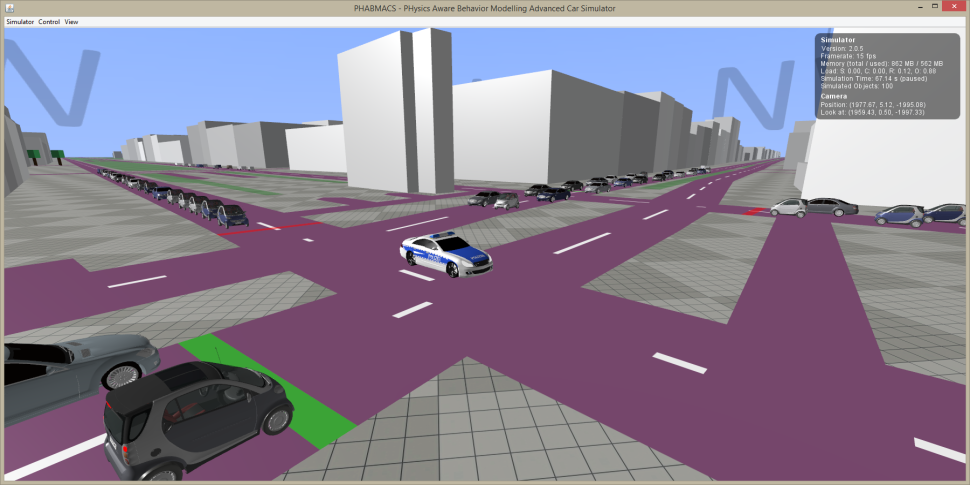Co-Simulation
In contrast to existing fixed simulator couplings, the MOSAIC simulation infrastructure allows the easy integration and exchange of simulators. Thus, the high flexibility of MOSAIC enables the coupling of the most appropriate simulators for a realistic presentation of vehicular traffic, emissions, wireless communication (cellular and ad-hoc), user behavior, and mobility applications. All simulator management tasks, such as time and data synchronization, interaction and lifecycle management, are handled completely by the MOSAIC runtime infrastructure (RTI).
Multi-Domain
Simulators usually cover specific domains, such as traffic or communication. With MOSAIC one can combine the most suitable simulator of each domain to build a holististic system simulation. The following simulators are already coupled with MOSAIC: Eclipse SUMO, our PHABMACS simulator (Traffic), OMNeT++, ns-3, MOSAIC Simple Network Simulator (SNS), MOSAIC Cell (Communication), MOSAIC Application (Application and behavior), and more.
Multi-Scale
Depending on the specific requirements of a simulation scenario, the most relevant simulators can be used. Even within a specific domain different simulators model different levels of domain. For example, traffic simulations can handle thousands of vehicles at once, but only on a low-detailed modelling level which might not be sufficient for specific use cases. For this purpose, a vehicle simulator modelling vehicle dynamics on a high-detailed level might be used, such as PHABMACS. With MOSAIC the exchange of these simulators on different modelling levels is uncomplicated, allowing simulations of advanced driver assistence systems (ADAS) of single cars, up to analyzing the traffic efficiency of Smart Mobility applications on a city-wide level.
Modelling and Configuration
The MOSAIC Application simulator is a simple way to test and evaluate Smart Mobility applications with MOSAIC. Applications for different entities, such as vehicles, servers, and road side units, can be integrated easily thanks to a well-established Java-API. Custom applications can be mapped onto all entities using a sophisticated mapping configuration, allowing easy adjustments of penetratration rates and traffic volumes. Following the Seperation-of-Concerns principle, each simulator is configured separately allowing a flexible parametrization of simulation scenarios.








